
Commercial Street is an arterial road in the boroughs of Tower Hamlets and Hackney that runs north to south from Shoreditch High Street to Whitechapel High Street through Spitalfields. The road is a section of the A1202 London Inner Ring Road and as such forms part of the boundary of the London congestion charge zone.

Spitalfields is an area in London, England and is located in the London Borough of Tower Hamlets. It is in East London and situated in the East End. Spitalfields is formed around Commercial Street and Brick Lane. It has several markets, including Spitalfields Market, the historic Old Spitalfields Market, Brick Lane Market and Petticoat Lane Market. The area has a long attracted migrants from overseas, including many Jews, whose presence gained the area the 19th century nickname of Little Jerusalem.

Annie Chapman was the second canonical victim of the notorious unidentified serial killer Jack the Ripper, who killed and mutilated a minimum of five women in the Whitechapel and Spitalfields districts of London from late August to early November 1888.

Mary Ann Nichols, known as Polly Nichols, was the first canonical victim of the unidentified serial killer known as Jack the Ripper, who is believed to have murdered and mutilated at least five women in and around the Whitechapel district of London from late August to early November 1888.
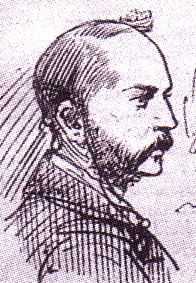
Frederick George Abberline was a British chief inspector for the London Metropolitan Police. He is best known for being a prominent police figure in the investigation into the Jack the Ripper serial killer murders of 1888.

Mary Jane Kelly, also known as Marie Jeanette Kelly, Fair Emma, Ginger, Dark Mary and Black Mary, is widely believed by scholars to have been the final victim of the notorious unidentified serial killer Jack the Ripper, who murdered at least five women in the Whitechapel and Spitalfields districts of London from late August to early November 1888. At the time of Kelly's death, she was approximately 25 years old, working as a prostitute and living in relative poverty.
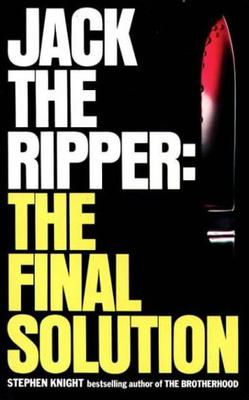
Jack the Ripper: The Final Solution is a book written by Stephen Knight first published in 1976. It proposed a solution to five murders in Victorian London that were blamed on an unidentified serial killer known as "Jack the Ripper".

Martha Tabram was an English woman killed in a spate of violent murders in and around the Whitechapel district of East London between 1888 and 1891. She may have been the first victim of the unidentified serial killer Jack the Ripper.
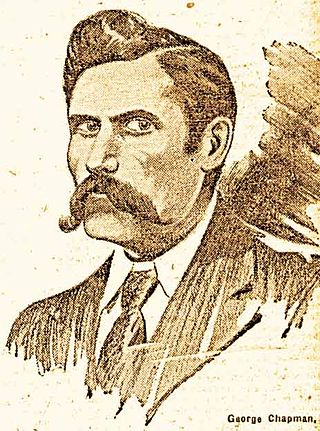
Seweryn Antonowicz Kłosowski, better known under his pseudonym George Chapman, was a Victorian era Polish serial killer known as the Borough Poisoner.
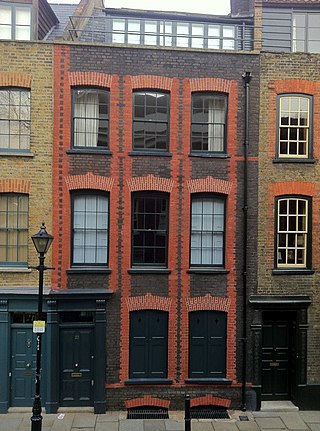
Fournier Street, formerly Church Street, is a street of 18th-century houses in Spitalfields in the East End of London. It is in the London Borough of Tower Hamlets and runs between Commercial Street and Brick Lane. The street is named after a man of Huguenot extraction, George Fournier.

Jack the Ripper was an unidentified serial killer active in and around the impoverished Whitechapel district of London, England, in 1888. In both criminal case files and the contemporaneous journalistic accounts, the killer was also called the Whitechapel Murderer and Leather Apron.
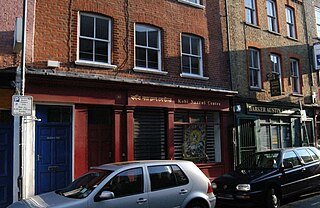
Hanbury Street is a street running from Commercial Street in Spitalfields to the junction of Old Montague Street and Vallance Road in Whitechapel located in the London Borough of Tower Hamlets. The eastern section is restricted to pedal cycles and pedestrians only.

George Bagster Phillips was, from 1865, the Police Surgeon for the Metropolitan Police's 'H' Division, which covered London's Whitechapel district. He came to prominence during the murders of Jack the Ripper when he conducted or attended autopsies on the bodies of four of the victims, namely Annie Chapman, Elizabeth Stride, Catherine Eddowes and Mary Jane Kelly. He was called by the police to the murder scenes of three of them: Chapman, Stride and Kelly.

Flower and Dean Street was a road at the heart of the Spitalfields rookery in the East End of London. It was one of the most notorious slums of the Victorian era, being described in 1883 as "perhaps the foulest and most dangerous street in the whole metropolis", and was closely associated with the victims of Jack the Ripper.

Dorset Street, originally known as Datchet Street, was a street in Spitalfields, East London, once situated at the heart of the area's rookery. By repute it was "the worst street in London", and it was the scene of the brutal murder of Mary Jane Kelly by Jack the Ripper on 9 November 1888. The murder was committed at Kelly's lodgings which were situated at No. 13, Miller's Court, entered from a passageway between 26 and 27, Dorset Street.

Police Superintendent Thomas Arnold was a British policeman of the Victorian era best known for his involvement in the hunt for Jack the Ripper in 1888. It was his opinion that Mary Jane Kelly was not a victim of the Ripper.

The Russian Orthodox Cathedral of the Dormition of the Mother of God and All Saints is the cathedral of the Russian Orthodox Diocese of Sourozh.

The Pride of Spitalfields is a public house at 3 Heneage Street in Spitalfields in the East End of London, just off Brick Lane. It was associated with a Jack the Ripper suspect.

The Jack the Ripper Museum is a museum and tourist attraction that opened in August 2015 in Cable Street, London. It recreates the East end of London setting in which the unsolved Jack the Ripper murders took place in 1888, and exhibits some original artefacts from the period as well as waxwork recreations of crime scenes and sets. The museum was founded by Mark Palmer-Edgecumbe, a former head of diversity for Google.

Joseph Barnett, also known by his nicknames Danny Barnett and Joe, was a fish porter who worked at Billingsgate Market in the 19th century, located in the East End of London, and later became known for being the roommate of Mary Jane Kelly. It was not suspected that he had murdered her and, even less, that he was Jack the Ripper, until the 1970s, when he was added to the growing list of more than 100 people that someone has speculated could be Jack the Ripper.





















